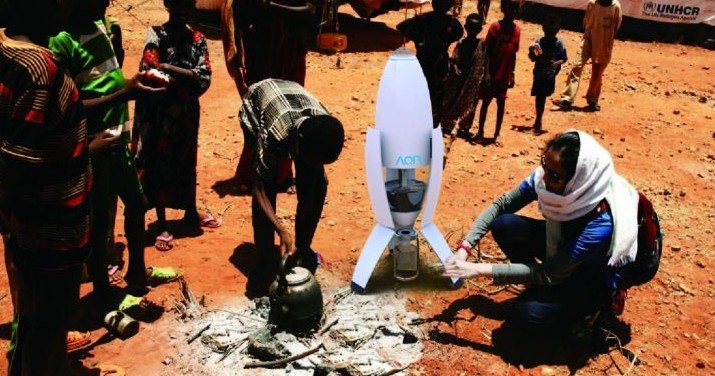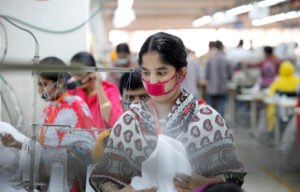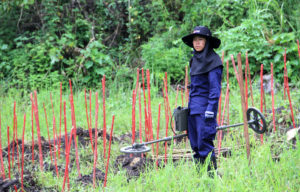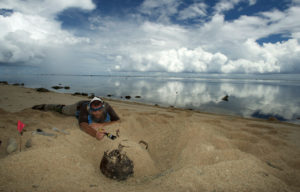
INDEX Awards
Making clean water from air
The challenge of bringing clean water to people in the world’s driest places has inspired many creative solutions. At this year’s international design competition, we check out some of the best water inventions.
Share
What is INDEX: Awards?
INDEX is a Danish organisation that each year runs a competition to find the best new ideas to improve people’s lives:
“We encourage designers all over the world to stop designing ash trays and tea cups and in stead focus their creative skills on more pressing challenges like our changing climate, over population, shortage of water, etc. as we belive that design and design processes can play an important role in creating better solutions for a rapidly changing world”.
The competition awards a total of half a million Euros, and the nominated designs cover everything from advanced technical projects to art designs and architecture.
INDEX: Awards began in 2005 an has since awarded a total of 2.5 million Euros to a total of 25 winning designs. This year, the awards will take place the 27th of August in Elsinore, Denmark.
More info: http://designtoimprovelife.dk/award/
Other categories
Region: Global
Theme: Health, New Technology, Sustainability, Technology
While billions of people in the developing world have gained access to clean drinking water since 1990, millions more still lack this basic necesity. Often, the water is far away from where people live and work, and when water carriers finally reach a lake or stream, it may be polluted. But maybe it doesn’t need to be difficult to get clean water, even in a desert, without digging deep wells or putting down long pipelines.
Salty rocket slakes thirst
Several inventions are now being developed that aim to literally pull water out of thin air. One of them is called AQR, and it frankly looks a bit like something out of a sci-fi movie. With its three legs deployed in the desert sand, this 90 cm tall gadget resembles a little spaceship on the surface of an alien planet. Instead of fuel, this ‘rocket’ carries 25 kilos of a special salt (CaCl2) which absorbs moisture when exposed to the air. To use the machine, simply open a little hatch during nighttime, to let cool air enter, and the moisture gets absorbed by the salt. Then close the hatch in the morning, and let the apparatus stand in the sun. Thanks to a light-gathering lens in the tip of the rocket, the sunlight heats up the salt, making it release the stored water, which is then pushed out through a membrane in the bottom of the device, ready to drink. The salt is left dry, ready to repeat the trick when the sun goes down. The inventors of AQR claim that their machine is able to produce between 11 and 15 litres of water per day, depending on the air humidity levels.
With its three legs deployed in the desert sand, this 90 cm tall gadget resembles a little spaceship on the surface of an alien planet. Instead of fuel, this ‘rocket’ carries 25 kilos of a special salt (CaCl2) which absorbs moisture when exposed to the air. To use the machine, simply open a little hatch during nighttime, to let cool air enter, and the moisture gets absorbed by the salt. Then close the hatch in the morning, and let the apparatus stand in the sun. Thanks to a light-gathering lens in the tip of the rocket, the sunlight heats up the salt, making it release the stored water, which is then pushed out through a membrane in the bottom of the device, ready to drink. The salt is left dry, ready to repeat the trick when the sun goes down. The inventors of AQR claim that their machine is able to produce between 11 and 15 litres of water per day, depending on the air humidity levels.
Meshy tower catches dew
Tapping the natural water content of the atmosphere has also inspired another team of designers this year. But instead of chemicals and plastics, this team has chosen to imitate nature.  Several species of desert insects and plants have evolved very fine hairs that work to condense the dew that occurs at nighttime, providing drops of water to drink. Italian designer Arturo Vittori wants to employ the same method, in order to provide clean water for villages in Northeastern Ethiopia. In this region, only one in three people have access to clean water, which leads to thousands of children dying each year due to water-borne diseases. In order to produce clean water, Vittori’s idea is to build 12 metres tall ‘Warka Towers’. Each tower is to be made from a lattice, to allow air to enter and reach a finely woven net suspended inside. At night, air moisture condenses as dew on the net, and the dew flows downwards along the fabric to be collected in a huge jar at the base of the tower. This technique works best in areas of high humidity, where each tower is expected to be able to produce up to 100 litres of water each night. The Warka Tower team is currently testing a prototype in Italy, experimenting with different types of net to maximise dew collection. The cost of each tower is estimated to be around 1000 dollars, which according to the designers is a small price to pay, compared to other conventional ways of providing water. After this initial investment, water is supposed to continue to flow for a very long time, due to the simplicity of the design and the ease of maintenance.
Several species of desert insects and plants have evolved very fine hairs that work to condense the dew that occurs at nighttime, providing drops of water to drink. Italian designer Arturo Vittori wants to employ the same method, in order to provide clean water for villages in Northeastern Ethiopia. In this region, only one in three people have access to clean water, which leads to thousands of children dying each year due to water-borne diseases. In order to produce clean water, Vittori’s idea is to build 12 metres tall ‘Warka Towers’. Each tower is to be made from a lattice, to allow air to enter and reach a finely woven net suspended inside. At night, air moisture condenses as dew on the net, and the dew flows downwards along the fabric to be collected in a huge jar at the base of the tower. This technique works best in areas of high humidity, where each tower is expected to be able to produce up to 100 litres of water each night. The Warka Tower team is currently testing a prototype in Italy, experimenting with different types of net to maximise dew collection. The cost of each tower is estimated to be around 1000 dollars, which according to the designers is a small price to pay, compared to other conventional ways of providing water. After this initial investment, water is supposed to continue to flow for a very long time, due to the simplicity of the design and the ease of maintenance.
Sun makes water safe
If 1000 dollars is a bit too much, maybe 10 dollars will still do the trick. Such is the estimated price for one of the small, solar cell powered ‘VALKIA’ water cleaning devices designed in Finland.  The idea is to let water flow through a small, triangular box that has solar panels on the outside, powering an ultraviolet light source inside. UV light is deadly to microorganisms, and in this way, this water cleaning device is able to make water safe for drinking, even though it may still not be completely clean in the literal sense of the word. For people living by the seaside, there’s also a design for a similar type of device, using solar power to remove salt from seawater. It could prove a lifesaver for people in poor communities close to the sea, or if you find yourself lost on a deserted island.
The idea is to let water flow through a small, triangular box that has solar panels on the outside, powering an ultraviolet light source inside. UV light is deadly to microorganisms, and in this way, this water cleaning device is able to make water safe for drinking, even though it may still not be completely clean in the literal sense of the word. For people living by the seaside, there’s also a design for a similar type of device, using solar power to remove salt from seawater. It could prove a lifesaver for people in poor communities close to the sea, or if you find yourself lost on a deserted island.
Smart pebble saves water
In the rich part of the world, water usually flows freely from the tap, and maybe it can be a little too easy to snooze in the shower. A family can waste many tonnes of water in this way every year. But a new shower gadget now aims to make it easier to save water.  ‘Waterpebble’ looks a bit like a little smooth stone, that you simply place on the floor or the shower, next to the drain. The device then automatically senses how much water you are using for each shower, and turns on a little red warning light when you’re using too much. Each day, the little red light comes on a bit earlier than the day before, gradually helping you get used to take shorter showers.
‘Waterpebble’ looks a bit like a little smooth stone, that you simply place on the floor or the shower, next to the drain. The device then automatically senses how much water you are using for each shower, and turns on a little red warning light when you’re using too much. Each day, the little red light comes on a bit earlier than the day before, gradually helping you get used to take shorter showers.
Endless shower with five litres
If you simply won’t give up the luxury of waking up gradually under the shower, but still want to save water, maybe you need another invention. Swedish company Orbital Systems has developed a space-age shower that is designed in cooperation with NASA, based on the showers astronauts use far from earth.  This shower works by continually gathering the water flowing out the drain, cleaning it by a special filter, and pumping it straight back up to the showerhead. In this way, you’ll keep showering in the same water, which means you’ll only use five litres of water for a shower, instead of the average 150 litres. You’ll also save energy, since you only need to heat those five litres once, and then spend a little more energy keeping the water at the desired temperature, instead of flushing the heat down the drain together with the water. Orbital Systems claims that the filter system in their shower will keep the water clean enough to drink, so it should be possible to rinse off just as effectively as in a regular shower.
This shower works by continually gathering the water flowing out the drain, cleaning it by a special filter, and pumping it straight back up to the showerhead. In this way, you’ll keep showering in the same water, which means you’ll only use five litres of water for a shower, instead of the average 150 litres. You’ll also save energy, since you only need to heat those five litres once, and then spend a little more energy keeping the water at the desired temperature, instead of flushing the heat down the drain together with the water. Orbital Systems claims that the filter system in their shower will keep the water clean enough to drink, so it should be possible to rinse off just as effectively as in a regular shower.







